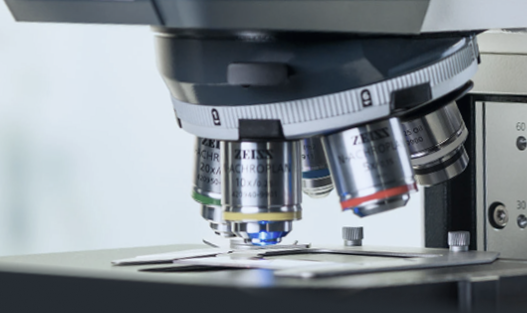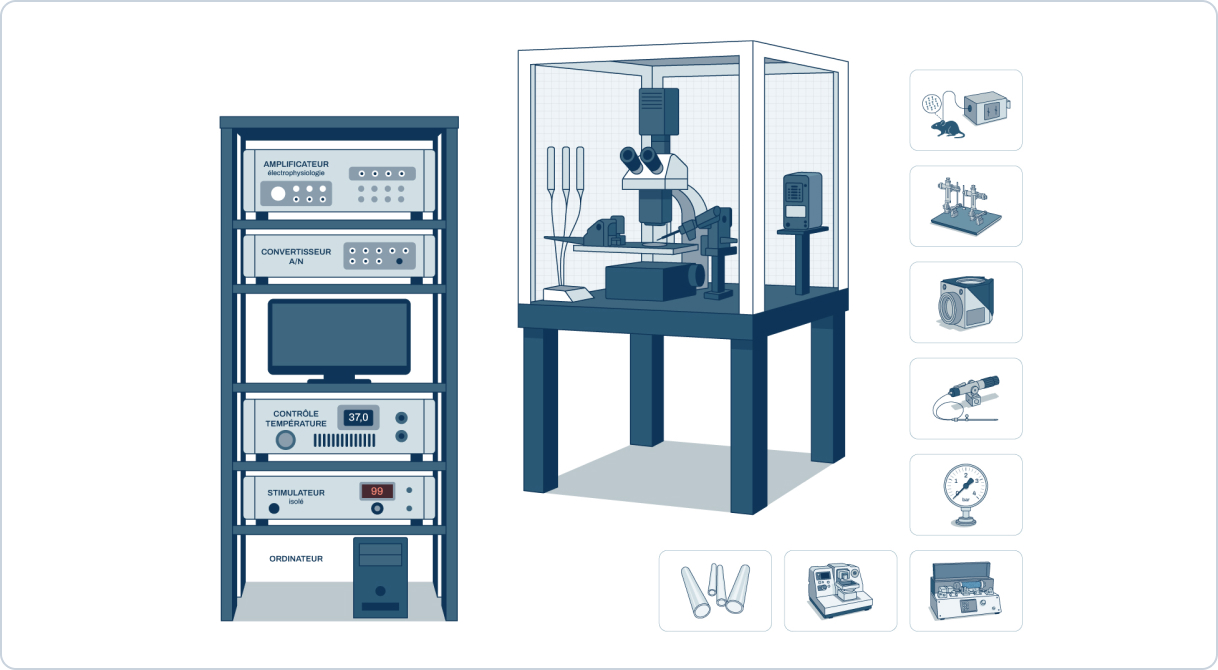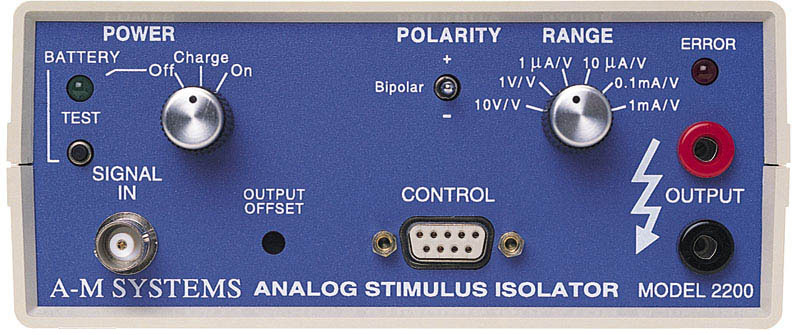Analog Stimulus Isolator Model 2200
The Model 2200 is an optically isolated analogue stimulus isolator, designed to convert any waveform from an external source into constant current or constant voltage pulses, while ensuring complete signal isolation. It runs on two rechargeable batteries (9 V for control, 12 V for output), guaranteeing up to 8 hours of continuous autonomy. It has a TTL gate port to switch the pulse on or off, and a self-diagnostic error indicator.
Features of theAnalog Stimulus Isolator Model 2200
- Provides opto-electrical isolation for signals generated by various analogue sources
- Constant current or constant voltage output, switchable via range selector
- Compatible with single or two-phase modes, up to ±50 V and ±5 mA
- Wide bandwidth up to DC-40 kHz, with rise time < 10 µs
- Very low noise : < 0.003% full scale (~150 pA RMS in current mode)
- Powered by two internal rechargeable batteries, operating time ≈ 8 h
- TTL “Control Gate” port to remotely enable or disable the output signal
- Error LED indicator lights up if the output signal does not follow the analogue input
Technical characteristics of theAnalog Stimulus Isolator Model 2200
| Caractéristique | Valeur |
|---|---|
| Input gain | ±10 V maximum |
| Maximum output | ±100 V single-phase or ±50 V two-phase, ±5 mA max |
| Output types | Constant current or constant voltage (switchable) |
| Bandwidth | DC to 40 kHz |
| Rise time | < 10 µs (on resistive loads) |
| RMS noise | < 0.003% full scale (~150 pA in current mode) |
| Available gain ranges | 6 front panel range positions |
| Insulation | Optoelectrical, DC-coupled |
| Power supply | 9 V battery (control) + 12 V battery (signal), recharger included |
| Autonomy | ≈ 8 hours continuous |
| TTL port | For gate On/Off and error signal |
| Accessories included | Zero adjustment tool, loader, operator’s manual |
| Guarantee | 3 years manufacturer’s standard |
Applications
- Secure conversion of analogue signals from DAQs or audio output cards into isolated pulses
- Use in electrophysiology, peripheral stimulation, fine-tuning of current/voltage
- Experiments requiring strict electrical isolation and a flexible analogue signal
- Safe addition of an isolator to an existing system to extend or amplify stimulation signals
Documentation
Brochure
PDF file – 832.2 ko


